
Reading comprehension is a LOT about language and visualization! This is especially true for the right brain learner, who learns best when he or she sees and experiences information.
So much is being discussed about how children learn to read or being taught HOW to read. These “reading wars” have been going on forever! No doubt, they will continue for a long time to come. The truth is…THERE IS NO ONE WAY TO TEACH READING!!— Yes, I said it!
Every child is different. They come to school from varying backgrounds and experiences, and with those experiences come the words or language they are comfortable using. We need to meet kids where they are at- NOT where others think they need to be.
YES, children need to understand, know, use and be able to manipulate or change around sounds that are letters (which are symbols for sounds, but most kids don’t make that connection right away.) Not all children will learn to do that at the same time or at the same rate.
Multiple factors are needed for children to be successful to learn to read and even more to improve reading comprehension. Just like the cartoon suggests, we view our students from multiple perspectives, and rarely look at the whole child and what that child is good at or comfortable doing.
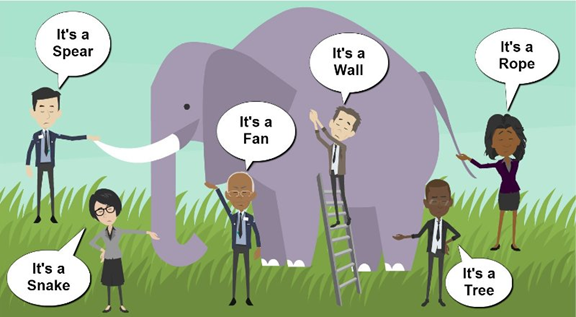
The right brain learner often has a longer list of strengths and challenges than others do. (picture source www.priyankadutta.com)
I have read thousands of reports over the years. To most parents, these reports can be overwhelming. Lots of words and pages of what they assessed and what the child is not good at. Most psychology professionals will report on a child’s strengths but that often gets lost when so much is suggested as to what should be addressed to help the child succeed. One of the most common findings is that a child is “weak in phonemic awareness” or “decoding skills”. It seems like other findings and suggestions – which admittedly are many- are overshadowed by the push to believe that if those skills are worked on exclusively, things will get better. Parents are bombarded by the notion that they need to have their kids spend hundreds of hours practicing and remembering rules of when certain sounds are made and that just by being able to sound out words, they will be able to comprehend what those words mean.
Many parents believe, The Science of Reading premise is that the Simple Formula of Reading is:
Decoding X Reading Fluency = Reading Comprehension
For many of us–and the thousands of students I have worked with, this just is NOT the case!
I, for one, need to have an understanding of what a word means… a picture in my head of an understanding of the word, within a context. In short, I need an understanding of LANGUAGE!
So many of our students can actually learn to decode. In isolation, they are able to tell me the individual sounds, and can put them together. What they struggle with is transferring or generalizing that skill when reading!
Another one of my favorite quotes is:
“Scientists have determined that it takes approximately 400 repetitions to create a new synapse in the brain- unless it is done with play, in which case, it takes between 10 and 20 repetitions!” Dr Karyn Purvis, a child development expert.
At 3D Learner, I have coined the term Flearning ® — where our goal is to have our students learn from AHA moment to AHA moment, by discovering the patterns. For the right brain learner, it is incredibly important to leverage their visualization skills and to make learning Fun.
Language, and the use of words come from play and discovery. As parents, it is vital that we create an environment where this is possible. It is also vital that we look at the whole child and sort out what things they CAN do and encourage that. If we only focus on what a child CANNOT do, they lose so much, self-esteem suffers, and anxiety takes over!
Understanding where the Science of Reading fits in the BIG PICTURE of what your child needs will lead to a way better outcome for success for your child. Not every child learns exactly the same way. What we do know is that the most effective way for kids to succeed in reading is for them to make connections: with their teacher, with words and with their experiences. If we listen and observe, they will show us what they need.
At 3D Learner, we provide an Integrated, Engaging, Fun and Effective way to improve reading fluency and reading comprehension.
If you would like to discuss how you can put your child on their Pathway to Reading Fluency and Reading Comprehension Success call us at 561-361-7495 or click here to schedule a no cost Pathway to Reading Fluency and Reading Comprehension Success Conversation.
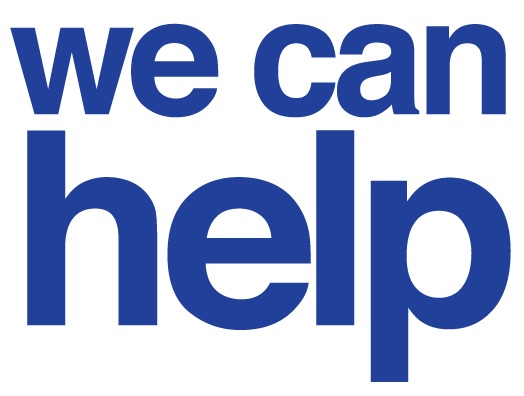
Why would your bright, creative child be at risk for third grade retention or any grade retention? If your child is a neurodivergent, right brain or kinesthetic learner (i.e. sometimes referred to as a hands-on learner or visual learner) they are behind due to their learning differences, executive function challenges and pandemic related challenges, even if they were in preschool.
Third grade retention is more likely to be a risk with mandatory retention rules, but students in early grades are at risk for grade retention too.
The good news is that if your child is a smart struggling neurodivergent, right brain or kinesthetic learner, they can often make significant gains in reading fluency and reading comprehension in months with our strength-based training.
We know that most smart struggling students:
- Are a neurodivergent, right brain or kinesthetic learner (hands-on) who can do far better with experiential learning that leverages their strengths
- Have some combination of working memory, processing speed, visual processing, attention, and/or anxiety challenges
- Are far smarter than present results would indicate
At 3D Learner, we have helped many students to:
- Beat grade retention and score at, above, or even well above grade level on tests
- Rediscover their natural love of learning
- Improve their working memory, processing speed, and self-esteem
- Improve their attention and emotional regulation
3D Learner can help the neurodivergent, right brain or kinesthetic learner beat third grade retention or other grade retention by making significant gains in reading fluency and reading comprehension in months. 3D Learner’s comprehensive educational assessment reveals important issues that many other assessments miss. For instance, one parent had a recent psycho-educational test that indicated her daughter had an attention, working memory and processing speed issue. After her daughter completed our assessment, she was surprised to learn that her daughter:
- Was a neurodivergent, right brain and/or kinesthetic learner (hands-on)
- Was a lot smarter than present results would indicate
- Had a significant visual processing issue, skipping words and lines when reading
- Struggled with small words, reading fluency, reading comprehension, and sequencing
- Had significant attention and emotional regulation issues
- Was very strong in 5 of the 11 skills we assessed — she had a great visual memory, was very creative and had a larger vocabulary than most
- But she had a real problem with the small words that often change the meaning of a sentence (i.e. words like the, but, what, if) and had significant anxiety challenges
By understanding how she learned best, we developed an engaging, personalized program built around her strengths and interests. In just months. 3D Learner helped her score above grade level on the standardized test. When they saw these results, the parents asked “Why do schools not teach the way the neurodivergent learner learns best?” We explained that schools, like most learning centers, focus on a child’s weaknesses.
Schools often do not:
- Leverage the student’s strengths and interests
- Identify and address issues like working memory, visual processing, or processing speed
- Ignite a love for learning, which is an essential part of the 3D Learner Experiential Learning Process.
Her daughter made great progress and was actually in the highest reading group the following year.
We see grade retention risks as a great opportunity for parents to make a true life-long difference in their child’s learning.
If you have a child in any elementary school grade who is struggling in school, 3D Learner can help. To discuss your child’s learning style and needs, call us at 561-361-7495.
Frequently asked questions about grade retention & the neurodivergent, right brain or kinesthetic learner
Question: What is the key reason for third grade retention and for earlier grade retention?
Answer: In Florida public and charter schools, third grade retention is primarily based on the student’s inability to do well on the English Language Assessment. While anxiety may be an issue, significant reading comprehension issues are often the primary issue. In the earlier grades, reading fluency is often the criteria for grade retention. At 3D Learner, we identify and address both reading fluency and reading comprehension issues.
Question: If many students at risk for grade retention are a neurodivergent, right brain or kinesthetic learner, why do the schools not teach this way?
Answer: Schools tend to have a one size fits all approach. There has been a real push towards phonics and phonemic awareness. Unfortunately, this does not provide the experiential learning most right brain or visual learners need. Even worse, we have seen smart and even gifted learners face grade retention because their needs were not met.
Question: Many programs focus on phonics and phonemic awareness. What are the key skills the neurodivergent, right brain or kinesthetic learner needs to master before phonics will work?
Answer Word recognition and sight word vocabulary are two of the skills needed before phonics will work. Processing speed, working memory, and attention are also skills that must be mastered.
Question: Experiential learning used to be the norm in kindergarten, first and second grade. What happened?
Answer: If that were still the case, the neurodivergent, right brain or kinesthetic learner would be more likely to thrive. The challenge today is that many of the standards are not age appropriate. This results in less experiential learning, which negatively impacts the neurodivergent, right brain or kinesthetic learner and makes grade retention more likely.
Question Is it too late in the school year to help beat third grade retention or any grade retention?
Answer It is almost never too late to beat third grade retention or grade retention. The rules on third grade retention in Florida provide many ways to beat third grade retention. The best one is to score a Level 2 on the state assessment. There are also ways to be retested at the end of the summer or at the start of the next school year.
Question: I am not sure if my child is a neurodivergent, right brain or kinesthetic learner or what issues are holding my child back. I fear third grade retention. Is there a way to talk with your team and to assess my child?
Here is a no cost screening tool you can use to see if your child might be a neurodivergent, right brain or kinesthetic learner.
Answer: You can call us at 561-361-7495 or click here to schedule a How to beat Third Grade Retention or other Grade Retention risks Conversation

(call us at 561-361-7495 and ask about our assessment special)
(Especially for right brain, kinesthetic and neurodivergent learners)
How to improve reading fluency and reading comprehension is a goal for many students who qualify for the Florida Empowerment Scholarship and the Personalized Education Program.
The term dyslexia has attracted a great deal of information. Many parents invest in a dyslexia treatment. Frequently this will improve a child’s reading fluency (i.e. how fluently a child reads out loud), but reading comprehension challenge persists. At 3D Learner, we focus on how to improve reading fluency and reading comprehension with an integrated, engaging and effective program. We also address executive function, visual processing and anxiety challenges.
3D Learner offers a focused assessment that can be done in person or online, that addresses the following questions:
- Whether your child is a right brain, kinesthetic or neurodivergent learner. For the child who learns differently, it really helps to know that and to find a program that leverages their strengths, identifies and addresses their challenges and helps your child to improve both their reading fluency and reading comprehension.
- Whether your child has dyslexia — and where their reading fluency is strong and where they struggle.
- What your child’s present level of reading comprehension is
- Whether your child has a visual processing challenge — over 74% of the students we see either skip words and/or lines when reading
- How to improve your child’s reading fluency and reading comprehension
To discuss how to improve your child’s reading fluency and reading comprehension call us at 561-361-7495 to discuss your specific situation.
3D Learner — Offering a Strength Based Program to Improve Reading Fluency and Reading Comprehension for over 26 years
Since 1997, 3D Learner has been helping students to improve their reading fluency and reading comprehension. With what has become known as the Florida Empowerment Scholarship for Unique Abilities and the Personalized Education Program for others, we have been able to help more students with Florida’s vastly expanded voucher program.
3D Learner specializes in helping the right brain, kinesthetic or neurodivergent learners who often:
- Remembers details from places visited, even from years ago
- Learns best when they see and experience information
- Are a lot smarter than present results would indicate
- Often have two, three, four of the following challenges:
- They skip words and lines when reading
- They can focus on that which interests them, but lose focus when the work is hard or frustrating
- They have difficulty remembering what they heard or read
- Anxiety and frustration often occur when doing academic work
For voucher students, we are offering a two-hour assessment – tutoring – feedback session when you purchase one hour from 3D Learner through the Florida Empowerment Scholarship or the Personalized Education Program. You can either:
- Purchase an hour and call us at 561-361-7495 or
- Call us at 561-361-7495 to discuss your specific situation.
3D Learner Results for Right Brain, Kinesthetic and Neurodivergent Students
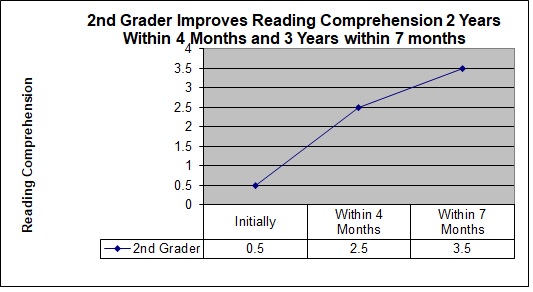
We have helped a second grader to improve her reading comprehension 3 grade levels in 7 months
and a 9th grader to improve her reding comprehension 4 grade levels in 6 months.
A homeschool student had been through 2 years of dyslexia treatments, but her comprehension was still at the kindergarten level, even though she was in 2nd grade.
With our help, she was able to:
- Significantly improve her reading fluency
- Improve her reading comprehension by 2 grade levels in 4 months and by 3 grade levels in 7 months
- Significantly improve her attention, visual processing, and confidence
- Read 23-chapter books on her own, after not having read one previously
- Go from a struggling dancer to the top group, because of their improved neural timing, working memory and confidence
A 9th grader improved her reading comprehension by 4 grade levels in 6 months.
Her mother commented: “Her reading comprehension has increased four grade levels, and she has increased her rate of reading by 100 words per minute. Her ability to comprehend what she is reading has also improved and she doesn’t hate reading for the first time in her life”.
For voucher students, we are offering the assessment – tutoring session with a separate parent consult, if you purchase one hour from 3D Learner through the Florida Empowerment Scholarship or the Personalized Education Program. You can either:
-
Purchase an hour and call us at 561-361-7495 or
-
Call us at 561-361-7495 to discuss how to improve your child’s reading fluency and reading comprehension and more.
For non-voucher students, we are offering this $250 value for $124.

The neurodivergent, right brain or kinesthetic learner in 4th, 5th and 6th grades missed critical time in school during the pandemic. They often struggle with reading fluency, reading comprehension, math word problems, processing issues and may struggle with anxiety and frustration.
This blog post focuses on the significant risks and opportunities for smart kids who learn differently, the key strengths and challenges of the neurodivergent, right brain or kinesthetic learner, examples of our successes and the pivotal role parents play.
If you would like to discuss how to help your child succeed, you can either
call us at 561-361-7495 or schedule a call at “Let’s Discuss How to Help Your Child Succeed”
9 key points we wish to stress are:
- Many smart struggling students are neurodivergent, right brain or kinesthetic learners. These are the kids who learn best when they see and experience information. They are often a lot smarter than present results would indicate. They often have a sea of strengths and challenges. Most school based and outside interventions fail to recognize and capitalize on these strengths and the need to engage the student in the learning process. You can access our no cost screening tool at
Is My Child a Neurodivergent, Right Brain or Kinesthetic Learner?
- There is a significant risk that things will get worse.
- These students can do far better with an integrated, engaging and effective system that significantly improves reading fluency, reading comprehension, math skills, attention, executive function skills, and confidence, while reducing anxiety. We have found it important to:
- Tailor solutions to meet the student’s needs
- Leverage their strengths and engage them in the learning process
- Identify and addresses their challenges
- Lower their anxiety and boost their self-esteem
- Helps parents to secure the help the schools can provide
- Helps the parents to be more effective coaches and advocates for their child
- Psycho-educational testing by itself is valuable, but the benefits are much greater when it leads to a transformational program that allows your child to make significant progress.
- For those students with dyslexia, a dyslexia treatment is often recommended. The Science of Reading, that focuses on improving reading fluency, may be an integral part of the solution, but most of these programs are not designed to improve:
- Vocabulary and reading comprehension
- Math and writing skills
- Attention, working memory and processing speed — executive function skills
- Your parenting skills
At 3D Learner, we address dyslexia and reading fluency issues with the UFLI Program ®, a dyslexia intervention developed by the University of Florida Learning Institute. It is an excellent option, that allows us to tailor a solution to meet your child’s specific needs.
- For those students with ADHD, Attention Deficit Disorder, ADHD medication is often recommended. We use the Interactive Metronome ® to improve attention. This can either be used to complement medication or as a stand alone offering. Our students have done very well with the Interactive Metronome, that has several unique benefits:
- It builds neural connections in the brain, that are still there years later.
- It works all day, so you do not have the problem of your child having difficulty paying attention when doing homework, because the medication has worn off.
- It also improves handwriting, reading and math fluency, sports skills and impulse control.
Note, the Interactive Metronome produces very different results, depending on the provider. We have used it for over 24 years with excellent results.
- If your child is a neurodivergent, right brain or kinesthetic learner, it is up to you to find the solution that can help your child be all they can be.
- 3D Learner has helped thousands of neurodivergent, right brain and kinesthetic learners to make significant gains in months.
If you would like to discuss how to help your child succeed, you can either
call us at 561-361-7495 or schedule a call at “Let’s Discuss How to Help Your Child Succeed”
One mom commented, “How is it you know my child better after less than 10 minutes than people who have taught him for years?. Our response, “That is our focus, helping kids who learn differently succeed.”
Her son gained 3 years in his reading comprehension is less than a year. His teacher said, “Tyler made more progress in a year than any child I have had in 27 years of teaching”.
Specific challenges may include some of the following
- Reading fluency and reading comprehension. Reading comprehension gaps often widen and start to impact math, social studies and science,
- Writing. Handwriting may be an issue, but putting their thoughts on paper is almost always an issue
- Math. Some are good at arithmetic, but math word problems are often a nightmare
- Processing skills. They often have an excellent memory for what they have seen and experienced, but have great difficulty remembering what they heard or read
- Attention. They can often hyper-focus on video games or something they like, but they often have great difficulty paying attention to that which is boring or frustrating
- Visual processing. The neurodivergent, right brain or kinesthetic learner often has good peripheral vision, that is seeing the world around them. Their challenges often include skipping words and lines when reading, missing signs when doing math problems and with handwriting and misaligning their math work, that results in mistakes
- Anxiety, frustration and lack of confidence. These have always been a problem for many kids, but these issues are more common and more significant with this group in this post pandemic era.
- In some cases, being rebellious. These students often are in fight or flight mode and sometimes the relationship with their parents are really strained.
There is a risk that academic, frustration and anxiety issues will worsen, as the work gets harder and hormones kick in.
As parents, there are several key points to recognize:
- School programs and accommodations can help, but they rarely help a neurodivergent, right brain or kinesthetic learner come near their potential
- If your child learns differently, they may have the potential to do far better within months
- If you would like to discuss how to help your child succeed, you can either
call us at 561-361-7495 or schedule a call at “Let’s Discuss How to Help Your Child Succeed”
The Rebellious Baseball Player who was a Neurodivergent Learner
Alan seemed like a normal kid, until you realize that he had been suspended twice by his school. His parents complained that he did not read much, he was at times confrontational and even though he liked baseball and was good at it, he often had games where he was off.
They were also upset that despite an above average IQ, he was now in classes with a lot of kids who were struggling academically and were not a good influence on Alan. A therapist referred the parents to 3D Learner.
The parents were aware of the emotional control issues. They were not aware of how far behind their son was, that it could get worse and that there was a significant opportunity for growth.
Alan was not interested in school, but his ears perked up when we told him we could improve his baseball skills. His assessment showed:
- His reading comprehension was four years below grade level
- He had difficulty paying attention, but the real issue was his impulsive behavior. When he tried to match a beat and he was off, he got frustrated and at times angry. He shared that this anger and impulsivity happened in a number of settings – including the two where he was suspended
- He skipped words and lines when reading and read very slowly
- He learned best when he saw and experienced information
The goals we all agreed to where to:
- Improve his reading comprehension 3 grade levels in 6 months
- Behave well in school, even when he was frustrated
- Get out of remedial reading for 7th grade and to be in classes with his friends
- Increase his reading speed from 110 to 200 words per minute
- Increase his batting average from 263 to 350
- Increase the number of home runs from 1 to 5
- Work respectfully with his parents and to have a nonverbal cue, when he felt himself losing it
The actual results were:
- He improved his reading comprehension 4 grade levels in 4 months
- His behavior was far better at home and in school
- He improved his reading speed to 206 words per minute
- He did get into regular English classes and got a B in English
- His batting average improved from 263 to 403, which was the highest on his team
- He hit 10 home runs that spring and it led the league
A few of the keys to his success:
- His parents saw the potential, were committed to his success and really liked that we could improve his academic, his behavior and his baseball skills. We are always looking for a hook to engage students.
- We taught him how to pause when he was frustrated
- Our hands-on program engaged him and he learned how to visualize what he read
- We improved his attention using the Interactive Metronome ® and showed him how to stay calm, even when he made mistakes
- We improved his visual tracking
- He saw changes within weeks in his reading, his behavior and his baseball performance
The More Typical Neurodivergent, Right Brain or Kinesthetic Learner
Ben could put together Legos for hours, had an incredible visual memory, but in 5th grade, his comprehension was two years below grade level, he often lost focus and he avoided reading. Note, if you only read at 110 words per minute, you might avoid reading too. Ben also suffered from anxiety challenges.
His parents saw an article with this graph that showed that secondary school students with learning disabilities often fall 3 to 4.9 years below grade level and some fall even further behind.
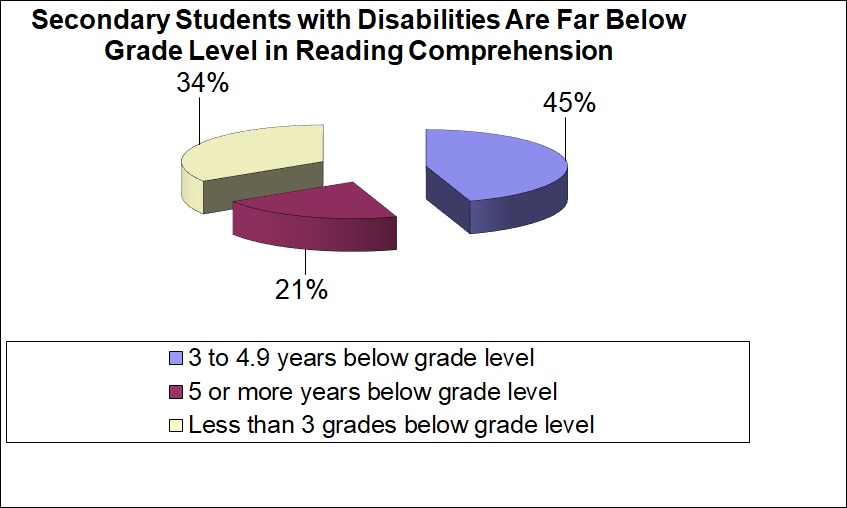
We assessed Ben and it confirmed:
- A significant anxiety challenge — his heart rate jumped to 142 beats per minute when we just mentioned taking an English Language Assessment
- He did lose focus
- His reading comprehension was two years below grade level
- He clearly learned differently and was a neurodivergent learner and very creative.
- He was motivated to succeed
The goals we set were to:
- Improve his comprehension 3 grade levels in 6 months
- Decrease the time it took to get homework time from 2.5 to 1.5 hours
- Have him stay calm
The results with Ben were good:
He improved his reading comprehension 3 grade levels in 4 months.
- He decreased his homework time to 1.25 hours
- He was much calmer
Even better, Ben wound up reading 4 long books over the next 3 months and went on to win an award as the best reader in his middle school.
Smart Neurodivergent Students
Alexa’s mom was really frustrated. Alexa had a 118 IQ, well above average. Alexa’s reading was at the 48th percentile and she was very shy and afraid to ask questions.
Mom had asked the principal what she could do, and the principal suggested there was no need to do anything, he then added, “Someone has to be average”.
Mom became a Mom on a Mission.
She heard us speak on GOLD Students — Gifted Operating with a Learning Difference. We focus on the student’s gifts and when we do, many neurodivergent, right brain and kinesthetic learners do far better.
Our assessment confirmed that Alexa both learned differently and was on grade level for reading comprehension. It also showed she lost focus and skipped words and lines when reading.
The goals were to:
- Significantly improve her attention and visual processing
- Get Alexa to ask 3 questions a day the first month, 4 a day the second month and 5 a day the third month
- To improve her performance on the SAT from the 48th to the 85th percentile
The results were Alexa:
- Made significant improvements in her attention and visual processing
- Asked 4 questions a day the first month, 8 questions a day the second month and we stopped counting
- Improved her reading comprehension from the 48th to the 95th percentile
- Became an extrovert and was a leader in the band in high school
7 Important Things to Consider About a Neurodivergent, Right Brain or Kinesthetic Learner in this Post Pandemic Period
- Too often the neurodivergent, right brain or kinesthetic learner’s strengths and either not identified or the solutions do not capitalize on their strengths
- Capitalizing on their strengths is often a key to improving their attitude and lowering their anxiety
- The learning gaps are more significant than ever, the gaps often widen and schools rarely close the gap
- Reading fluency and reading comprehension may both often issues and you want to address
- Executive function challenges (i.e. attention, working memory and processing speed) need to be both identified and improved
- Visual processing is often an issue
- It takes informed, empowered and proactive parents to make the difference
If you would like to discuss how to help your child succeed, you can either
call us at 561-361-7495 or schedule a call at “Let’s Discuss How to Help Your Child Succeed”
Note, it is often up to parents to put their neurodivergent, right brain or kinesthetic learner on their Pathway from Stress to Outrageous Success

In our first article on” Getting it Right for Your Child”, we discussed several key points:
- Reading fluency and reading comprehension gaps are often significant — especially for the right brain, kinesthetic or neurodivergent learner, who learns best when they see and experience information. Note, understanding math and anxiety are often issues for these students, too.
- These gaps often widen over time. A student who is 2 years below grade level in reading comprehension in 4th grade may be 3 or 4 years below grade level by the time they enter high school.
- The upside potential is often far greater than parents realize. We have seen students we help improve their reading fluency dramatically and improve their reading comprehension by 2, 3 or even 4 grade levels within months.
- Anxiety and frustration are bigger problems than at any point. In this post pandemic period, more kids are anxious and frustrated, as they missed the foundation skills needed for success. When a child is anxious, they cannot learn; they are constantly doubting what they can do.
In recent discussions with teachers and other professionals and based on our own experience, 4th and 5th graders are especially at great risk, because they missed the key foundational skills needed for success due to school disruptions during COVID, during these critical early years of schooling.
- Parents play a vital role in this equation. The right brain, kinesthetic or neurodivergent learner often has a unique set of strengths and challenges that will require a tailored approach for the child to reach his or her full potential.
In this blog post, we will discuss the benefits of both assessing for a disability and assessing for success. Many parents call us after they have had a psychoeducational assessment done by an outside professional. This is an excellent time to leverage your investment by finding the right intervention to help your child succeed.
We offer a no cost consult you can access by calling us at 561-361-7495
Parents Play a Critical Role in Getting the Right Assessments and Interventions, Especially for the Right Brain, Kinesthetic or Neurodivergent Child
Getting a diagnosis for a “disability” is often critical for several reasons:
- Public and charter schools require a student to have an identified disability before a student can qualify for special education services. This is sometimes hard for parents to hear. They fear their child will be labeled- when in reality, they learn differently- are smart- but the system is not set up to help kids like this, especially when there is often more than one issue that needs to be addressed.
- As a Mom and an Educator, the emotional turmoil my kids experienced was the deciding factor that WE, AS PARENTS, needed to do something different! We needed to take the lead in finding what our kids were good at as well as find the professionals that understood and connected with them. Just getting a person that had specific training in a specific kind of program did not work. WE HEAR THIS ALL THE TIME FROM PARENTS. It is vital to understand the whole child and work together as a team.
- Voucher programs, like the Florida Empowerment Scholarship for Unique Abilities, require a student to have a specific qualifying disability before a private or homeschool child can qualify for this program that can be worth $10000 or more for a student per year.
- All schools require a qualifying disability to get accommodations. We can help you understand the process and how to best maneuver through it to get the help your child needs. It is important to remember that schools cannot always handle multiple issues: especially processing issues.
Too often schools delay the evaluation process. They frequently say they must complete the Response to Intervention (RTI) or Multi-Tiered System of Supports (MTSS) process before they will evaluate a child. Here is a link to a blog post that discusses how RTI cannot be used to delay or deny an evaluation and a sample letter to expedite the process.
Our single biggest mistake with our own kids was not recognizing that they were both right brain, kinesthetic and neurodivergent learners who learned best when they saw and experienced information. Too often assessments do not recognize these strengths. The good news is that more and more private psychoeducational evaluations are identifying these strengths.
The three reasons it is important to identify if your child is a right brain, kinesthetic or neurodivergent learner are that these students::
- Often struggle for years, because their strengths are not leveraged
- Can often make far greater gains, when their strengths are leveraged
- It may make you a far more effective coach and advocate for your child
To help you understand if your child is a right brain, kinesthetic or neurodivergent learner, download our screening tool. We recommend you complete this with your child — some of their answers may surprise you.
Discovering your child is a right brain, kinesthetic or neurodivergent learner is often the critical first step to unlock your child’s potential. If you find your child is a right brain, kinesthetic or neurodivergent child who learns differently and you want to discuss a strength-based approach to help your child succeed in months, give us a call at 561-361-7495
Common Challenges for Right Brain, Kinesthetic or Neurodivgent Learners
The neurodivergent learner often has challenges with executive function issues, dyslexia, auditory/visual processing difficulties and/or anxiety.
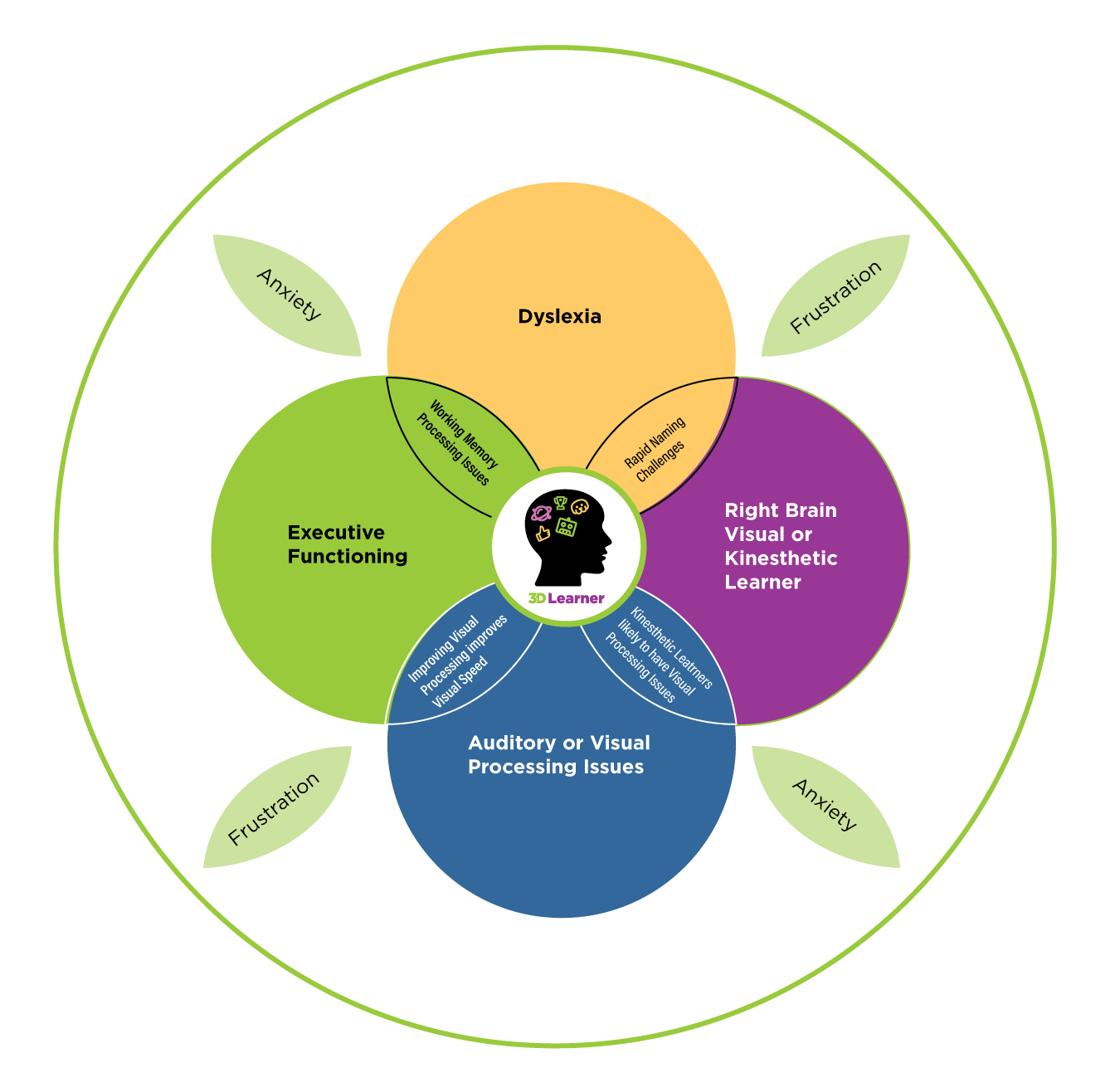 The right assessment can identify specific strengths and cognitive weaknesses
The right assessment can identify specific strengths and cognitive weaknesses
allowing for tailored interventions and support.
For individuals with executive function challenges, an assessment may include tasks that evaluate working memory, processing speed, planning and attention. This can help educators and support professionals understand the specific areas where the individual may need assistance. We use the Mindprint Assessment ® developed by the University of Pennsylvania that identifies executive function strengths and challenges.
For 25 years, we have used the Interactive Metronome ® to assess and address attention issues. This assessment often allows both parents to see the attention challenge in action. The Interactive Metronome is an excellent tool to improve attention and it also reduces impulsivity and hyperactivity and improves handwriting, sports performance and math and reading fluency.
At 3D Learner, we use the Core Assessment from the UFLI ® program to assess for dyslexia and identify specific strengths and challenges. This program was developed by the University of Florida Literacy Institute and was based on the Orton Gillingham model. This assessment allows us to tailor a treatment to the specific issues a child has.
In the case of auditory or visual processing issues, assessments may focus on tasks that assess how well an individual processes and interprets auditory or visual information. Understanding these challenges can guide the development of strategies and accommodations to support learning. We use a Visagraph ® that shows how the student’s eyes track when reading. Here is a link to a video that shows how a student’s eyes tracked before and after the intervention.
The 3D Learner Assessment Results in a Tailored Solution
At 3D Learner, our goal is to help a student to achieve significant gains in months. All the tools we use have proven to be valuable in tailoring a solution to meet a student’s needs. After we do an assessment, we then review the results and if appropriate agree on specific goals and a plan to help your child to make significant gains in months. This works
especially well for the right brain, kinesthetic or neurodivergent child who learns differently, Note, we can also tailor a program for students with executive function, attention, visual processing and/or math challenges.
We offer a no cost consult you can access by calling us at 561-361-7495
Note, the right brain, kinesthetic or neurodivergent child often has dyslexia, ADHD and other executive function challenges. What is missing is that these students often learn differently and have visual processing issues. We strongly recommend leveraging these two tools to screen to see if your child:
Again, we recommend doing these assessments with your child, as their answers may surprise you.
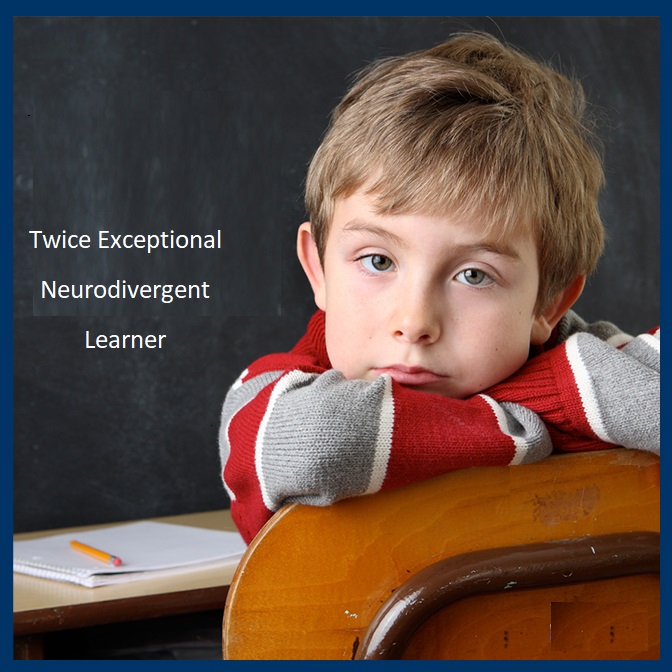
(Call 3D Learner at 561-361-7495 to put your Twice Exceptional Student on Their Pathway to Success)
“Twice exceptional” (2e) students refer to individuals who are both intellectually gifted or talented and may be neurodivergent learners with related challenges. This combination can present unique challenges and strengths in their learning experience. Twice exceptional neurodivergent learners may include those with conditions such as Executive Function issues, dyslexia, ADHD, autism spectrum disorder, or other learning disabilities.
I am Mira Halpert. I have my Master’s in Teaching the Gifted and Talented from the University of Michigan. I also have two twice exceptional children. After years of frustration with dyslexia treatments, learning centers and reading programs, I discovered both my kids were right brain kinesthetic learners. With the 3D Learner Program I developed, my daughter was able to improve her reading comprehension 4.2 grade levels in 7 months, improve her GPA from a 2.7 to a 4.4 and later earn her Master’s in Education from the University of Florida. My son improved his reading scores in elementary school, so that no more school remediation was needed, and he was able to participate in the highly gifted math program.
Over the last 26 years, 3D Learner has helped many twice exceptional students to succeed. Two examples include:
A student whose parents were told not to even apply to a rigorous college prep school, because if he got in he would not succeed. With our help, he was accepted by the school, became the valedictorian and later graduated from MIT.
While another student could solve high level math problems and was incredibly creative, he really struggled with the basics. We were able to improve his foundational skills and his confidence. He was able to succeed in school and is now thriving at the University of Chicago.
5 Things We Have Come to Learn About Twice Exceptional Neurodivergent Learners
1- Most of them are right brain kinesthetic learners, who learn best when they see and experience information
2- Many have significant executive function challenges. Some with working memory and processing speed scores that are far below what their intelligence potential is (these scores often impact their IQ score!).
3- Visual processing issues are quite common. They may have good peripheral vision, but they often skip words and lines when reading and make what appear to be “stupid” mistakes when doing math problems because their eyes do not work together.
4- Their academic performance is often far below their potential. In some cases, dyslexia, dysgraphia or other conditions may have them performing below grade level. In other cases, they may be performing at or above grade level, but they have the potential to do far better than that with the right help.
5- Schools or traditional programs often do not result in significant gains. The twice exceptional neurodivergent learner can benefit most from a program that plays to their strengths, identifies and addresses their challenges and boosts their self-esteem,
As the mom of the student who went to MIT said, “You changed his attitude and that was 90 percent of the battle”.
How 3D Learner Can Help Put Your Twice Exceptional Child on Their Pathway to Success
As parents, we wish we had access to both the right assessment and help for our daughter earlier in her life. To help parents, we are offering three ways to learn more:
1- Sign up for our Parents, Put Your Twice Exceptional Child on Their Pathway from Stress to Outrageous Success Webinar this Thursday evening January 11th at 9 pm.
Sign up and if you cannot make it, we will send you a replay.
2- Download our strengths and challenges infographic and get our series of posts on Getting It Right for Your Twice Exceptional Child.
3- Call us at 561-361-7495 and we can discuss how you can make the difference. If you want, we can also share how we Assess The Twice Exceptional Neurodivergent Child and how we help the Twice Exceptional Neurodivergent Child to Succeed with our 3D Learner Program ®.


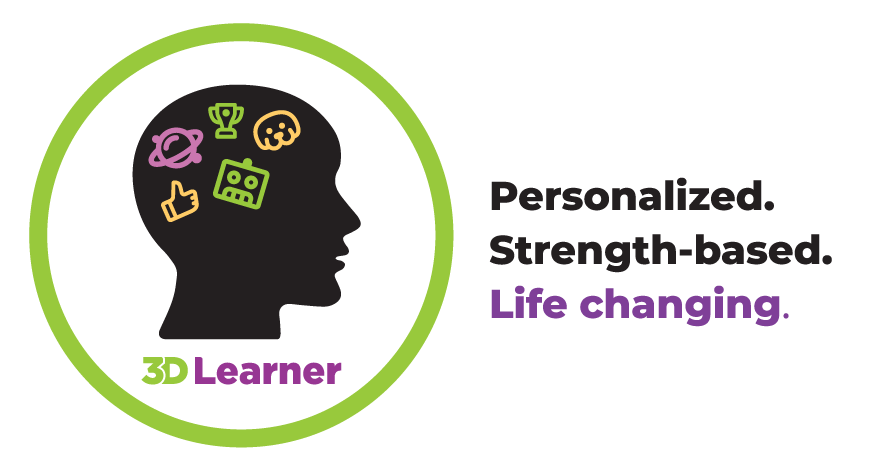
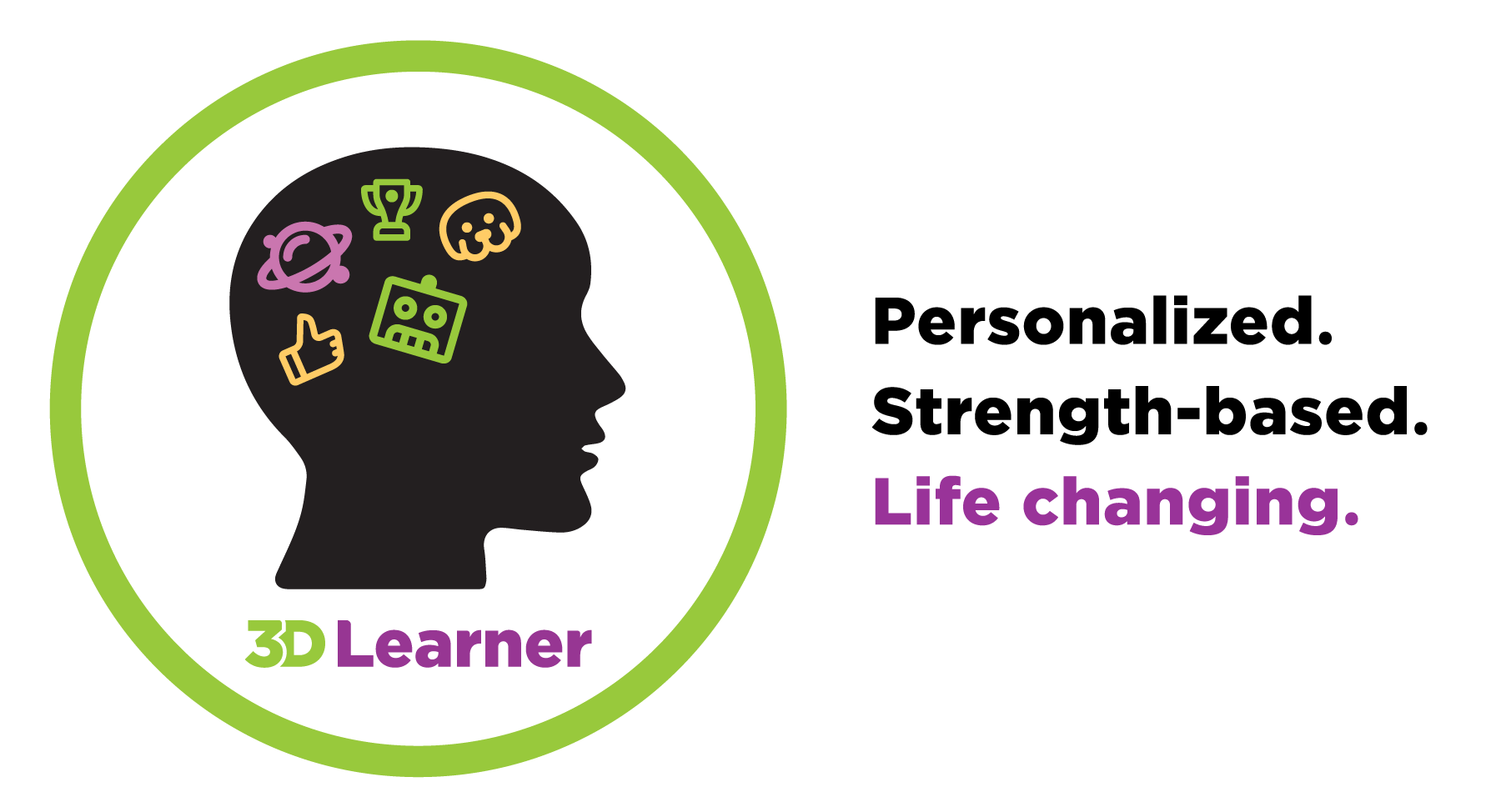








Recent Comments